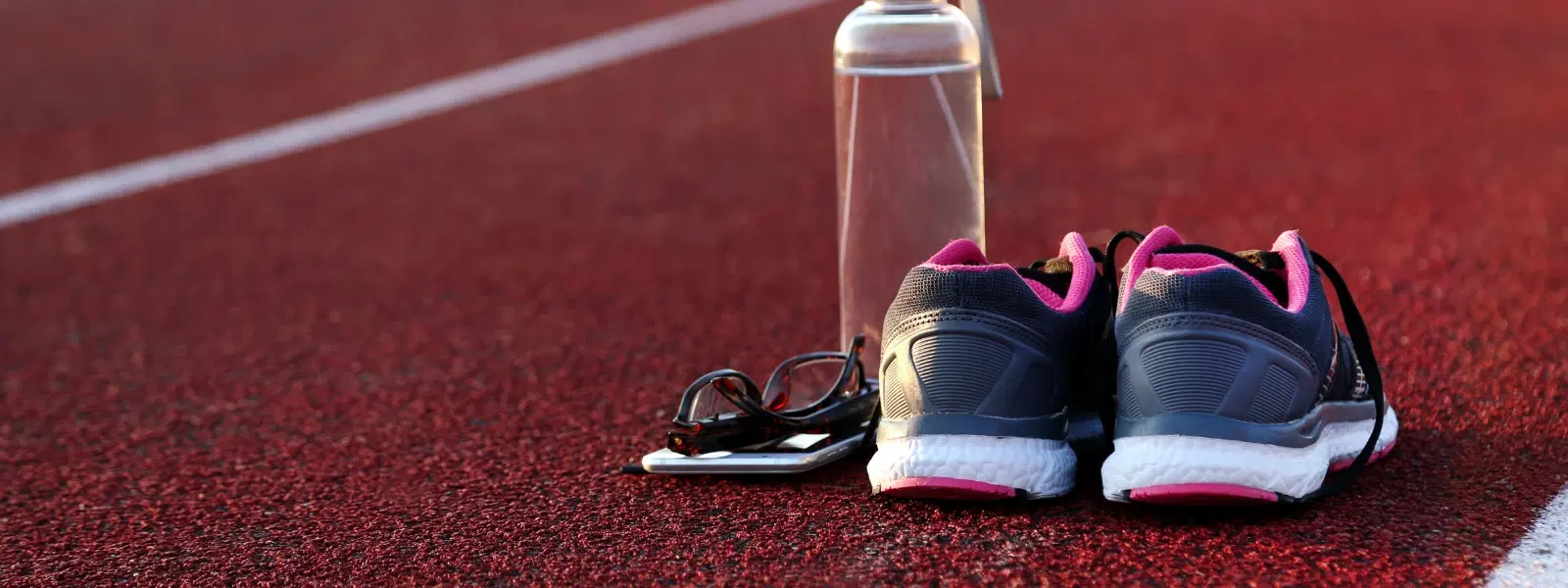
Footwear Guide
•04 min read

Finding the perfect running shoes is essential for comfort, performance, and injury prevention. With so many options available, it can be overwhelming to know how to select running shoes that truly suit your needs. This checklist simplifies the process, guiding you through the key steps to choose the right running shoes whether you are a beginner or an experienced runner. By the end of this guide, you'll learn how to pick running shoes that match your running style, offer a great fit, and enhance your overall running experience.
Before diving into the wide array of footwear, it is important to define your specific running requirements. Start by asking yourself if you prefer road running, trail running, or if you switch between different terrains. Each type of running calls for different features in running shoes. Road running shoes are lightweight and designed for smooth surfaces, while trail running shoes boast extra grip and durability for rugged, uneven terrain. For those who enjoy both, hybrid shoes offer a balanced option. Your running frequency also impacts your choice. Casual runners may prioritize comfort and moderate cushioning, whereas frequent runners require robust support and durability to keep up with their training routines.
This step also involves understanding how your running style influences which features you should look for in running shoes. It is key to match the shoe characteristics to your goals, ensuring you have better traction, cushioning in running shoes, and overall comfort during every stride.
Understanding your foot structure is a crucial part of choosing the right running shoes. Take a moment to analyze your arch type, as each type requires different support features. Those with flat arches often need stability or motion-control shoes to prevent overpronation, while runners with medium arches usually benefit from well-balanced, neutral shoes. On the other hand, individuals with high arches should opt for cushioned shoes designed to absorb impact effectively. Equally important is understanding your gait. Visiting a store that offers a gait analysis or simply checking for wear patterns on your old shoes can reveal whether you overpronate, underpronate, or have a neutral gait. This insight is essential to narrow down the selection process.
Expert Tip: Know Your Feet Before You Shop
Did you know that understanding your foot shape and running gait can significantly boost performance and reduce injury risk? A quick gait analysis or a careful look at your shoe wear can save you from purchasing the wrong type of running shoes.
This part of the guide ensures you are not only choosing based on aesthetics but also considering vital elements like support and alignment for a healthier running experience.

The comfort and fit of your running shoes are non-negotiable. Improperly fitting shoes can lead to discomfort, blisters, and even injuries. Start by consulting a detailed running shoe size guide. When trying on shoes, ensure there is about a thumb's width of space between your toes and the shoe’s front. It is ideal to try them on at the end of the day when your feet are slightly swollen, and always wear your usual running socks to get the most accurate fit.
Pay attention to running shoe fit tips: the shoes should feel snug around the heel without slipping, the midfoot should offer secure support without being too tight, and the forefoot should be flexible enough to allow natural movement. These practical tips help you avoid common pitfalls, ensuring that every run is comfortable and free of distractions.
Not all running shoes are created equal. It is essential to compare features that cater to your running style and preferences. Consider the cushioning in running shoes, a key factor for many runners. Soft cushioning is beneficial for long distances or for those with joint sensitivity, whereas firmer cushioning targets runners who demand responsiveness and stability for speed training. Equally, the design of the outsole varies: trail running shoes vs road running shoes come with different traction and tread patterns. Trail shoes are engineered with aggressive treads for better grip on uneven surfaces, while road shoes favor smoother outsoles optimized for pavement.
Additional considerations include the breathability and material of the upper. Look for mesh uppers that promote ventilation during long runs or in hot weather and select waterproof options when running in wet or muddy conditions. Understanding these features will empower you to make a well-informed decision on how to select running shoes that align with your unique needs.
Before finalizing your purchase, the testing phase is paramount. Always try before you buy; this means walking or lightly jogging in the shoes to really feel the support and comfort they offer. Exercise on various surfaces, such as a treadmill or the store floor, to ensure the shoes deliver under different conditions. Testing also allows you to check for any potential issues such as slipping or inadequate fit.
Be mindful of common mistakes: never choose shoes based solely on their looks or assume that your usual size fits without measuring your feet. Additionally, avoid trying on shoes at the wrong time of day; footwear fit can change as your feet swell throughout the day. Taking these precautions will enhance your overall shopping experience and ensure you invest in the best possible pair of running shoes.

Beginner runners should look for shoes that offer excellent cushioning, a comfortable fit, and versatility. Neutral shoes with moderate support are ideal for those just starting out.
Running shoes are typically categorized into road running shoes, trail running shoes, and stability shoes, each designed to suit different terrains and foot types.
Ensure there is about a thumb's width of space in the toe box, that your heel feels snug without slipping, and that your midfoot has enough support during short walks or light jogs.
If you run on rugged or uneven terrain, trail shoes are the best option due to their grip and durability. For running on smooth, paved surfaces, road shoes offer better support and lightweight comfort.
Key features to consider include cushioning, traction, breathability, and overall fit. Understanding your running style and the terrain you will be tackling can help you prioritize these features effectively.
Selecting the right running shoes doesn't have to be a daunting task. By understanding your running needs, knowing your foot type and gait, focusing on proper fit, and evaluating key features, you can confidently decide how to select running shoes that keep your feet happy and boost your performance. Enjoy every run with shoes that truly represent who you are – embodying style, comfort, and the spirit of active self-expression. Explore the world of footwear with confidence and a touch of style as you set out on your next running adventure.